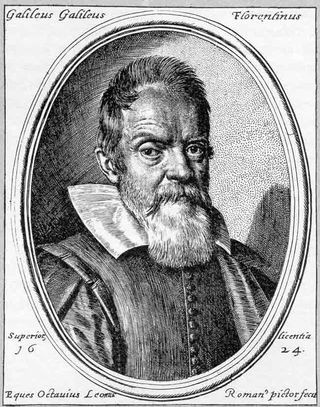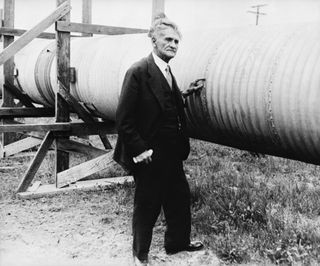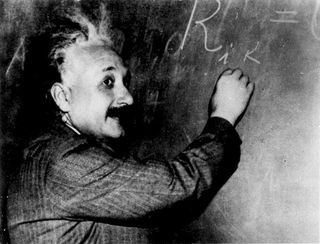Are you curious about the ultimate speed limit of the universe? The speed of light, a fundamental constant, governs much of our understanding of physics and space. SIXT.VN is here to guide you through the fascinating world of light speed and its implications, especially as you consider your travels in Vietnam. Let’s explore this concept together and see how it connects to your next adventure! Considering Vietnam travel, think of how quickly SIXT.VN can arrange your airport transfer and hotel bookings, bringing you closer to your destination at the speed of convenience.
1. What is the Speed of Light?
The speed of light in a vacuum is precisely 299,792,458 meters per second (approximately 186,282 miles per second). This constant, denoted as “c,” is a cornerstone of modern physics. According to Albert Einstein’s theory of special relativity, nothing with mass can travel faster than light. As matter approaches this speed, its mass becomes infinite, effectively making light speed the ultimate speed limit of the universe. This principle has far-reaching implications for our understanding of space, time, and energy, crucial elements for planning your journey through Vietnam with SIXT.VN.
 Abstract, futuristic image of blue light streaks radiating outward, giving the impression of rapid movement or traveling at high speed, inspired by the concept of faster-than-light travel
Abstract, futuristic image of blue light streaks radiating outward, giving the impression of rapid movement or traveling at high speed, inspired by the concept of faster-than-light travel
2. Why is the Speed of Light Important?
The speed of light isn’t just a number; it’s a fundamental constant that shapes our universe. It’s so immutable that organizations like the U.S. National Institute of Standards and Technology use it to define international standard measurements like the meter. This universal constant is integral to understanding the vast distances in space and the very nature of time and space itself. When considering travel distances within Vietnam, SIXT.VN ensures you experience efficiency and speed in your transportation arrangements, maximizing your exploration time.
3. What is a Light-Year?
A light-year is the distance light travels in one year, approximately 6 trillion miles (10 trillion kilometers). Astronomers use this unit to measure the immense distances across the universe. For instance, the moon is about 1 light-second away, the sun is about 8 light-minutes away, and Alpha Centauri, the nearest star system, is 4.3 light-years away. Understanding these vast distances puts our own travel plans into perspective, highlighting the importance of efficient travel solutions like those offered by SIXT.VN when navigating Vietnam.
According to NASA’s Glenn Research Center, visualizing a light-year involves laying the Earth’s circumference (24,900 miles) in a straight line, multiplying it by 7.5 (one light-second), and then placing 31.6 million similar lines end to end. The result is nearly 6 trillion miles. This concept underscores the enormity of space and the relative ease of traveling within a single country, where SIXT.VN can provide seamless transport solutions.
How Long Would It Take Humans to Travel One Light Year?
Traveling one light-year would take an incredibly long time with current technology. An airplane traveling at 600 mph (965 km/h) would require 1 million years to cover that distance. Even with a crewed spacecraft like the Apollo lunar module, the journey would take approximately 27,000 years, according to BBC Sky at Night Magazine. This immense timescale underscores the relative convenience of traveling within Vietnam, where SIXT.VN can swiftly arrange your transportation needs.
4. The Speed of Light: FAQs Answered
To better understand the intricacies of light speed, let’s address some frequently asked questions, answered by experts like Dr. Rob Zellem, a staff scientist at NASA’s Jet Propulsion Laboratory.
4.1 What is Faster Than the Speed of Light?
Nothing! Light represents a universal speed limit. According to Einstein’s theory of relativity, it is the fastest speed attainable in the universe, approximately 300,000 kilometers per second (186,000 miles per second). While theoretical concepts might suggest otherwise, no physical object can surpass this speed. Considering this limit, the efficiency of SIXT.VN’s travel services within Vietnam becomes even more valuable, optimizing your time and experience.
4.2 Is the Speed of Light Constant?
The speed of light is a constant in a vacuum, such as the vacuum of space. However, light can slow down when it passes through an absorbing medium like water (225,000 kilometers per second) or glass (200,000 kilometers per second). This change in speed is due to the interaction of light with the particles of the medium. This principle reminds us that even the fastest phenomena can be influenced by their environment, just as your travel experience can be enhanced by the reliable services of SIXT.VN.
4.3 Who Discovered the Speed of Light?
One of the earliest attempts to measure the speed of light was made by Ole Rømer in 1676, who observed the moons of Jupiter. However, the first high-precision measurement was achieved in 1879 by the Michelson-Morley Experiment. These historical milestones illustrate humanity’s persistent curiosity and dedication to understanding the universe, mirroring SIXT.VN’s commitment to continuously improving and innovating travel solutions for you.
4.4 How Do We Know the Speed of Light?
Ole Rømer measured the speed of light by observing eclipses of Jupiter’s moon Io. He noted that eclipses occurred slightly earlier when Jupiter was closer to Earth and later when Jupiter was farther away, attributing this effect to the time it took for light to travel the varying distances. This clever observation laid the groundwork for future, more precise measurements. Rømer’s ingenuity is a testament to human curiosity and resourcefulness, qualities mirrored by SIXT.VN in providing creative and effective travel solutions.
5. How Did We Learn the Speed of Light?
The quest to understand the speed of light spans centuries, involving philosophers, astronomers, and physicists.
5.1 Early Philosophers and Galileo
As early as the 5th century BC, Greek philosophers like Empedocles and Aristotle debated the speed of light. Empedocles believed light had a travel rate, while Aristotle thought it was instantaneous. In the mid-1600s, Galileo Galilei attempted to measure light speed using lanterns on hills but could only conclude that it was at least 10 times faster than sound. These early inquiries highlight the enduring human fascination with fundamental questions, much like your own curiosity to explore Vietnam with SIXT.VN.
 Galileo Galilei is credited with discovering the first four moons of Jupiter.
Galileo Galilei is credited with discovering the first four moons of Jupiter.
5.2 Ole Rømer’s Breakthrough
In the 1670s, Danish astronomer Ole Rømer, while creating a timetable for sailors, observed discrepancies in the eclipses of Jupiter’s moon Io. He realized that light took measurable time to travel from Io to Earth, leading to an estimate of about 124,000 miles per second (200,000 km/s). This marked a significant step forward in our understanding of light speed. Rømer’s dedication to accuracy and practical application parallels SIXT.VN’s commitment to providing precise and useful travel solutions.
5.3 James Bradley’s Refinement
In 1728, English physicist James Bradley refined the calculation based on the change in the apparent position of stars due to Earth’s orbit around the sun, estimating the speed of light at 185,000 miles per second (301,000 km/s), accurate to within 1%. This improvement demonstrated the power of meticulous observation and calculation. Bradley’s attention to detail mirrors the thoroughness of SIXT.VN in ensuring your travel arrangements are seamless.
5.4 Fizeau and Foucault’s Earthbound Experiments
In the mid-1800s, French physicists Hippolyte Fizeau and Leon Foucault conducted Earth-based experiments. Fizeau used a rotating toothed wheel and a mirror, while Foucault used a rotating mirror. Both methods independently came within about 1,000 miles per second (1,609 km/s) of the actual speed of light. These innovative experiments demonstrate the value of creativity and ingenuity, qualities SIXT.VN brings to its travel services.
5.5 Albert A. Michelson’s Contributions
Albert A. Michelson, in 1879, replicated Foucault’s method with improved equipment, achieving a measurement of 186,355 miles per second (299,910 km/s), which remained the most accurate for 40 years. He later conducted more precise experiments, including one with a mile-long depressurized tube. Additionally, Michelson’s work with Edward Morley disproved the existence of luminiferous aether, revolutionizing our understanding of light. Michelson’s relentless pursuit of precision exemplifies SIXT.VN’s dedication to providing reliable and cutting-edge travel solutions.
 Dr. Albert A. Michelson stands next to a large tube supported by wooden beams.
Dr. Albert A. Michelson stands next to a large tube supported by wooden beams.
6. Special Relativity and the Speed of Light
Einstein’s theory of special relativity, encapsulated in the famous equation E = mc^2, unified energy, matter, and the speed of light. This equation demonstrates that small amounts of mass contain enormous energy and requires the speed of light to be a constant. Einstein asserted that light moves through a vacuum at the same speed, regardless of the observer’s motion. This groundbreaking theory transformed our understanding of the universe and solidified the speed of light as a fundamental constant, influencing everything from nuclear energy to space travel.
Implications of Special Relativity
Objects with mass cannot reach the speed of light because their mass would become infinite, requiring infinite energy to move them. This principle establishes the speed of light as the ultimate speed limit, shaping our understanding of physics and the cosmos. Just as the speed of light is a constant, SIXT.VN strives to provide consistent and reliable services, ensuring your journey is smooth and efficient.
 Albert Einstein writing on a blackboard.
Albert Einstein writing on a blackboard.
7. What Goes Faster Than the Speed of Light?
While nothing within the universe can travel faster than light, the universe itself expands at a rate exceeding the speed of light. This expansion occurs at a little more than 42 miles (68 kilometers) per second for each megaparsec of distance, according to astrophysicist Paul Sutter. At vast distances, this expansion rate surpasses the speed of light.
General Relativity’s Role
Einstein’s theory of general relativity allows this behavior because it applies to large-scale phenomena, unlike special relativity, which governs local interactions. Distant galaxies can recede at speeds faster than light without violating special relativity. While the universe’s expansion is beyond our control, SIXT.VN ensures that your travel within Vietnam is managed with optimal speed and efficiency, maximizing your enjoyment.
8. Does Light Ever Slow Down?
While the speed of light in a vacuum is constant, it can slow down when traveling through a material. The extent to which a material slows down light is known as its refractive index. For example, light moves almost as fast in Earth’s atmosphere as in a vacuum, but slows significantly when passing through a diamond, reducing to less than half its typical speed.
Trapping and Stopping Light
Scientists have even managed to trap and stop light inside ultra-cold clouds of atoms. Recent research has also explored stopping light at “exceptional points” where separate light emissions intersect. Additionally, experiments have shown that even in a vacuum, individual photons can be slowed down, demonstrating the complex nature of light. These scientific advancements remind us that even fundamental constants can exhibit surprising behaviors, just as SIXT.VN continues to innovate and adapt to provide exceptional travel experiences.
 A sparkling diamond amongst dark coal-like rock.
A sparkling diamond amongst dark coal-like rock.
9. Can We Travel Faster Than Light?
The idea of faster-than-light travel is a staple of science fiction, making interstellar voyages possible. While not guaranteed, physicists and sci-fi enthusiasts explore avenues to bypass the speed limit. One concept involves warping space-time around a spaceship, allowing it to traverse vast distances without actually moving faster than light within its local frame of reference.
The Appeal of Warp Speed
Without faster-than-light travel, interstellar journeys would be impossibly long. As SETI astronomer Seth Shostak noted, traveling to the next star system at current rocket speeds would take hundreds of thousands of years. Therefore, the quest for warp drive continues, pushing the boundaries of theoretical physics. While faster-than-light travel remains a distant dream, SIXT.VN brings you closer to your travel destinations within Vietnam with efficient and reliable services, making your journey as seamless as possible.
10. How Can SIXT.VN Enhance Your Travel Experience in Vietnam?
Understanding the speed of light and the vastness of the universe might seem disconnected from planning a trip to Vietnam. However, it highlights the importance of making the most of your time and resources. SIXT.VN offers a range of services designed to do just that:
- Airport Transfers: Start your trip stress-free with reliable and prompt airport pickup and drop-off services.
- Hotel Bookings: Choose from a curated selection of hotels that suit your budget and preferences, ensuring a comfortable stay.
- Sightseeing Tours: Explore Hanoi and its surroundings with expertly guided tours that showcase the best of Vietnamese culture and history.
- Flight Bookings: Find the best deals on flights to and from Vietnam, optimizing your travel budget.
SIXT.VN ensures that every aspect of your trip is handled efficiently, allowing you to focus on enjoying the rich culture and stunning landscapes of Vietnam.
SIXT.VN: Your Gateway to Seamless Travel in Vietnam
Don’t let the complexities of travel planning slow you down. With SIXT.VN, you can explore Vietnam with ease and confidence. Our comprehensive services cater to a variety of needs:
- Effortless Planning: We handle the details, so you don’t have to.
- Reliable Services: Count on us for consistent and high-quality support.
- Local Expertise: Benefit from our in-depth knowledge of Vietnam’s travel landscape.
Ready to embark on your Vietnamese adventure? Contact SIXT.VN today and let us transform your travel dreams into reality.
Address: 260 Cau Giay, Hanoi, Vietnam
Hotline/Whatsapp: +84 986 244 358
Website: SIXT.VN
FAQ Section: Understanding the Speed of Light and Travel in Vietnam
Q1: What exactly is the speed of light, and why is it important for understanding travel?
The speed of light is approximately 299,792,458 meters per second and is a fundamental constant in physics, illustrating the ultimate speed limit in the universe. While seemingly unrelated to local travel, it underscores the value of efficient solutions like SIXT.VN for maximizing your time.
Q2: How does the concept of a light-year relate to planning a trip to Vietnam?
A light-year measures vast astronomical distances, emphasizing the relative ease and speed of traveling within a country like Vietnam, where SIXT.VN can optimize your transportation needs.
Q3: Can anything travel faster than the speed of light, and how does this affect our daily lives?
In the physical universe, nothing with mass can travel faster than light, though the universe itself expands at a rate exceeding it. While this doesn’t directly affect daily life, it highlights the importance of optimizing travel speed within local contexts using services like SIXT.VN.
Q4: Does light ever slow down, and what does this tell us about the nature of the universe?
Yes, light slows down when passing through mediums like water or glass. This teaches us that even fundamental constants can be influenced by their environment, just as travel experiences are enhanced by reliable services like those from SIXT.VN.
Q5: Is it possible to travel faster than light in the future, and how would this change space travel?
Faster-than-light travel is currently theoretical, but if achieved, it would revolutionize space travel by significantly reducing travel times. In the meantime, SIXT.VN provides efficient and reliable travel solutions within Vietnam.
Q6: How can SIXT.VN help me make the most of my time while traveling in Vietnam?
SIXT.VN offers reliable airport transfers, convenient hotel bookings, expertly guided sightseeing tours, and affordable flight bookings to ensure efficient and enjoyable travel experiences throughout Vietnam.
Q7: What types of travel services does SIXT.VN offer to foreign tourists visiting Hanoi?
SIXT.VN provides comprehensive travel services, including airport transfers, hotel bookings, sightseeing tours, and flight bookings, tailored to meet the needs of foreign tourists in Hanoi.
Q8: How does booking a tour with SIXT.VN enhance my travel experience in Hanoi?
Booking a tour with SIXT.VN ensures that you benefit from expertly guided tours, showcasing the best of Vietnamese culture and history, while we handle all the logistical details for a seamless experience.
Q9: Can SIXT.VN assist with booking domestic flights within Vietnam, and what are the benefits?
Yes, SIXT.VN can assist with booking domestic flights within Vietnam, providing you with the best deals and optimizing your travel budget for efficient and affordable travel.
Q10: What measures does SIXT.VN take to ensure the safety and convenience of its customers during airport transfers?
SIXT.VN ensures safe and convenient airport transfers through reliable and prompt pickup and drop-off services, providing peace of mind and a stress-free start to your journey in Vietnam.
By understanding the broader context of the universe and optimizing the practical details of your travel plans, SIXT.VN helps you make the most of every moment in Vietnam. Contact us today to start planning your adventure.



